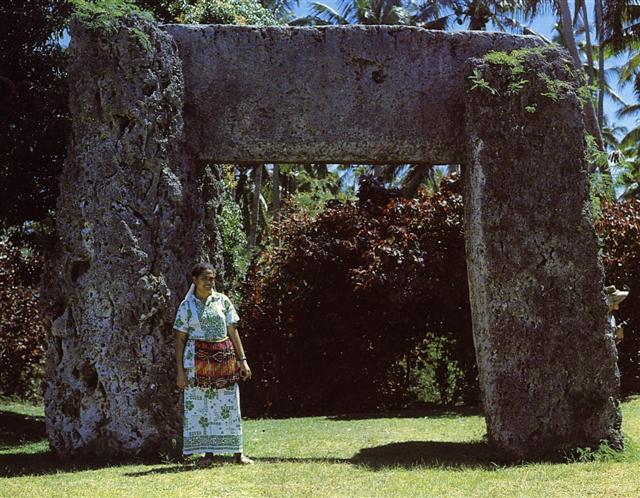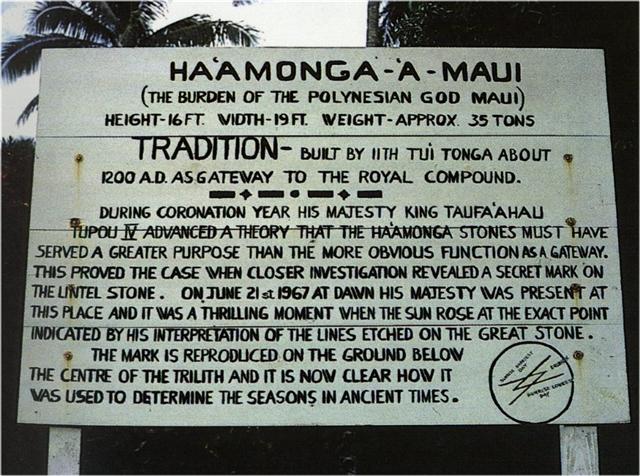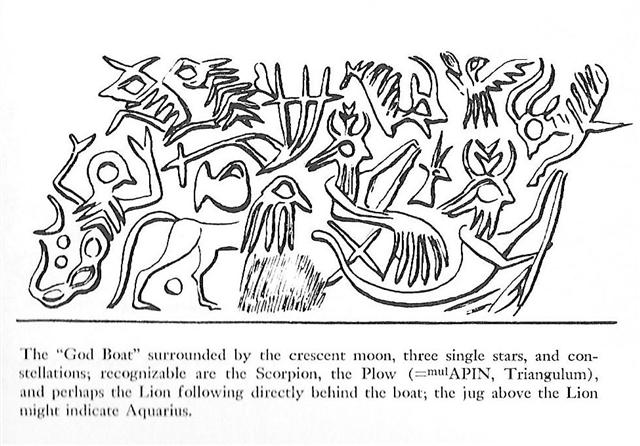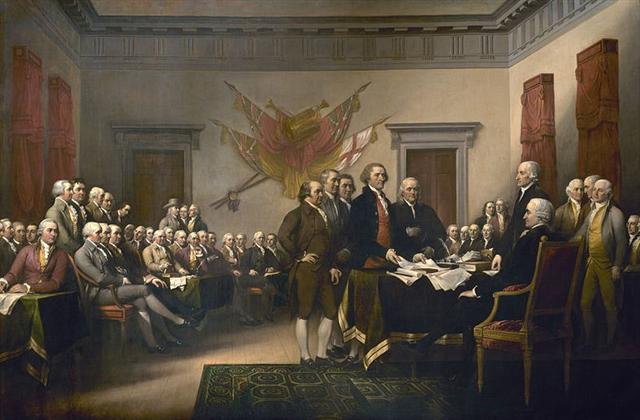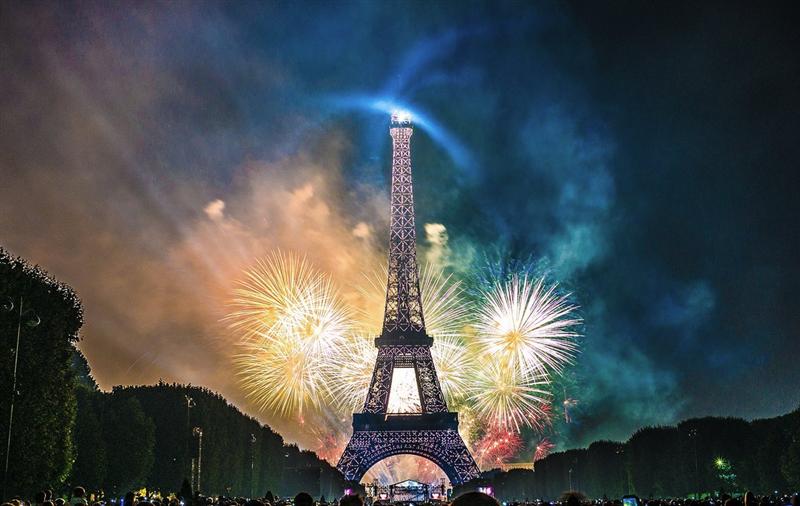Let's now list the Makoi place names from the beginning. I have red-marked 3 such places which earlier had definitely been visited by the dream soul (kuhane) of Hau Maka:
... (E:7) The dream soul went on and came to Te Pou. She named the place 'Te Pou A Hau Maka O Hiva'. The dream soul went on and came to Hua Reva. She named the place 'Hua Reva A Hau Maka O Hiva.' The dream soul went on and came to Akahanga. She named the place 'Akahanga A Hau Maka O Hiva.' The dream soul went on. She was careless (?) and broke the kohe plant with her feet. She named the place 'Hatinga Te Kohe A Hau Maka O Hiva.' The dream soul went on and came to Roto Iri Are. She gave the name 'Roto Iri Are A Hau Maka O Hiva.' The dream soul went on and came to Tama. She named the place 'Tama, an evil fish (he ika kino) with a very long nose (he ihu roroa).' The dream soul went on and came to One Tea. She named the place 'One Tea A Hau Maka O Hiva.' She went on and reached Hanga Takaure. She named the place 'Hanga Takaure A Hau Maka O Hiva.' The dream soul moved upward and came to (the elevation of) Poike. She named the place 'Poike A Hau Maka O Hiva.' The dream soul continued to ascend and came to the top of the mountain, to Pua Katiki. She named the place 'Pua Katiki A Hau Maka O Hiva.' Everywhere, the dream soul looked around for a residence for the king. The dream soul went to Maunga Teatea and gave him the name 'Maunga Teatea A Hau Maka O Hiva.' The dream soul of Hau Maka looked around. From Maunga Teatea she looked to Rangi Meamea (i.e., Ovahe).The dream soul spoke the following: 'There it is - ho! - the place - ho! - for the king - ho! - to live (there in the future), for this is (indeed) Rangi Meamea'. The drem soul descended and came to Mahatua. She named the place 'Mahatua A Hau Maka O Hiva.' The dream soul continued to look around for a residence for the king. Having reached Taharoa, she named the place 'Taharoa A Hau Maka O Hiva.' The dream soul moved along and reached Hanga Hoonu. She named the place 'Hanga Hoonu A Hau Maka O Hiva.' The dream soul came to Rangi Meamea and looked around searching. The dream soul spoke: 'Here at last is level land where the king can live.' She named the place 'Rangi Meamea A Hau Maka O Hiva.' The mountain she named 'Peke Tau O Hiti A Hau Maka O Hiva.' The dream soul moved along a curve from Peke Tau O Hiti to the mountain Hau Epa, which she named 'Maunga Hau Epa A Hau Maka O Hiva.' The dream soul went to the other side of the mountain Hau Epa. As soon as the dream soul looked around, she saw the sand (beach), which was very white and light. She remained there and explored everything. After she had looked around carefully, the dream soul of Hau Maka said, 'Ah! This is the place that will serve as a residence for the king.' She named the place 'Oromanga A Hau Maka O Hiva' and also named the neighboring bay 'Hanga Moria One A Hau Maka O Hiva.' The dream soul stepped forth lightly and reached Papa O Pea. She carefully looked around for a place where the king could settle down after his arrival and gather his people around (? hakaheuru). Having assembled his people (?) and having come down, he would then go from Oromanga to Papa O Pea, so went the speech of the dream soul. She named the place 'Papa O Pea A Hau Maka O Hiva.' She then hastened her steps toward Ahu Akapu. There she looked again for a residence for the king. Again the dream soul of Hau Maka spoke: 'May the king assemble his people (?) and may he come in the midst of his people from Oromanga to Papa O Pea. When the king of Papa O Pea has assembled his people (?) and has come to this place, he reaches Ahu Akapu. To stay there, to remain (for the rest of his life) at Ahu Akapu, the king will abdicate (?) as soon as he has become an old man.' She named the place 'Ahu Akapu A Hau Maka O Hiva.' The (entire) island she named 'Te Pito O Te Kainga A Hau Maka O Hiva.' The dream soul turned around and hurried back to Hiva, to its (Home)land, to Maori ... Later the Explorers followed in the steps of the kuhane and for them a few key dates have been given in Manuscript E:
Already from Maunga Teatea - high up on the Poike (Place Aloft) peninsula - the dream soul could perceive Rangi Meamea, which she would then reach after having passed over Mahatua, Taharoa, and Hanga Hoonu (Hanga-o-honu in the map above). This agrees well with the date Te Anakena 23 (the first day after the π day 22 / 7) when the Explorers would come to Rangi Meamea. My table is beginning immediately after Te Pou, a name the dream soul had given before Hua Reva and Akahanga. The Explorers also came first to Te Pou before they reached Hua Reva and Akahanga. ... They took their provisions with them, carrying them on their shoulders, went on, and reached Te Pou. They made camp and slept in Te Pou on the tenth day of the month of July ('Anakena'). [E:22] Then they all got up, carried their provisions on their shoulders, went straight ahead, and followed the path of the dream soul of Hau Maka. They came to Hua Reva and said, This is Hua Reva A Hau Maka! They went on and reached Akahanga, took a look at it and looked around. They said: This is it! and gave the name Akahanga A Hau Maka. However, then they visited Hatinga Te Kohe, Roto Iri Are, Tama, and One Tea before they reached Hanga Takaure. There were thus 6 kuhane stations between "July 10 and "July 11, as if there had been 6 days outside this regular Bharani Sun calendar, the 2nd station of which was Akahanga. ... Nut, whom the Greeks sometimes identified with Rhea, was goddess of the sky, but it was debatable if in historical times she was the object of a genuine cult. She was Geb's twin sister and, it was said, married him secretly and against the will of Ra. Angered, Ra had the couple brutally separated by Shu and afterwards decreed that Nut could not bear a child in any given month of any year. Thoth, Plutarch tells us, happily had pity on her. Playing draughts with the Moon, he won in the course of several games a seventy-second part of the Moon's light with which he composed five new days. As these five intercalated days did not belong to the official Egyptian calendar of three hundred and sixty days, Nut was thus able to give birth successively to five children: Osiris, Haroeris (Horus), Set, Isis and Nepthys ... 365 - 5 = 360. But the rongorongo texts could have counted with 366 right ascension days for a year, viz. 365 + one day for the fraction ¼. However, another (and better) explanation is to state that there were 6 * 6 = 36 such days inserted between "July 10 and "July 11: ... Although each Makoi station should rather correspond to for instance 360 / 60 = 6 heliacal days, with 29 * 6 = 174 = 348 (number of glyphs on side b of the C tablet) / 2 ... 360 - 36 = 324 = 320 (Dramasa) + 4. Counting 191 ("July 10) + 36 = 227 implies there could have been a kind of 'π door' at Te Pou.
Te Pou might have corresponded to a day of Osiris with Hua Reva as a day of Horus (the rising Sun),
in which case Akahanga ought to have corresponded to the place of Set (the setting Sun) and Hatinga Te Kohe to Isis (364): They went on and came to Hatinga Te Kohe and saw that in this place the kohe plant had been broken. They all said, Here it is, the kohe plant, troop of young men! This kohe plant had been broken by the feet of the dream soul and therefore they gave the name Hatinga Te Kohe A Hau Maka. They went on and came to Roto Iri Are. Again they said, There it is, Roto Iri Are and named (the place) Roto Iri Are A Hau Maka. They went on and reached Tama. They looked around and said, This is Tama. They gave the name Tama, an evil fish (he ika kino), a very long nose (He ihu roroa). Again they went on and came to One Tea. They saw it, looked around, and gave the name One Tea A Hau Maka. Then they went on and came to Hanga Takaure. There they gave the name Hanga Takaure A Hau Maka. They made camp and rested at the Bay of Flies for a week (etahi pohitu). On the eighteenth day of the month of July (Anakena) they went on from Hanga Takaure. They climbed uphill, went on, and reached Poike. When they arrived, they looked around and named (the place) 'Poike A Hau Maka'. They climbed uphill, went on, and reached Poike. When they arrived, they looked around and named (the place) 'Poike A Hau Maka'. They climbed up farther to Pua Katiki. When they arrived there, they looked around and named (the place) 'Pua Katiki A Hau Maka'. They came down from the height, from the mountain, from Pua Katiki, and reached Maunga Teatea. They looked around and gave the name 'Maunga Teatea A Hau Maka'. They all descended, they all came down from Pua Katiki. They reached Mahatua, saw it, looked around, and gave the name 'Mahatua A Hau Maka'. Then they went on and came to Taharoa. They saw it, looked around, and gave the name 'Taharoa A Hau Maka'. Again they went on and reached Hanga Hoonu. They saw it, looked around, and gave the name 'Hanga Hoonu A Hau Maka'. On the same day, when they had reached the Bay of Turtles, they made camp and rested. They all saw the fish that were there, that were present in large numbers - Ah! Then they all went into the water, moved toward the shore, and threw the fish (with their hands) onto the dry land. There were great numbers (? ka-mea-ro) of fish. There were tutuhi, paparava, and tahe mata pukupuku. Those were the three kinds of fish. After they had thrown the fish on the beach, Ira said, 'Make a fire and prepare the fish!' When he saw that there was no fire, Ira said, 'One of you go and bring the fire from Hanga Te Pau!' One of the young men went to the fire, took the fire and provisions (from the boat), turned around, and went back to Hanga Hoonu. When he arrived there, he sat down. They prepared the fish in the fire on the flat rocks, cooked them, and ate until they were completely satisfied. Then they gave the name 'The rock, where (the fish) were prepared in the fire with makoi (fruit of Thespesia populnea?) belongs to Ira' (Te Papa Tunu Makoi A Ira). They remained in Hanga Hoonu for five days. On the twenty-third day of the month of July ('Anakena'), they reached Rangi Meamea ... "July 23 (→ π + 1) = "July 19 (192) + 4 ↔ 192 + 36 + 4 = 232 = 228 + 4.
In the map by Métraux above we can see that Huareva and Akahanga cove were defining a pair of borders for the tribe of Ngaure (Ngaura in the map by Van Tilburg below). Ga. Preposed plural marker of rare usage. 1. Sometimes used with a few nouns denoting human beings, more often omitted. Te ga vî'e, te ga poki, the women and the children. Ga rauhiva twins. 2. Used with some proper names. Ga Vaka, Alpha and Beta Centauri (lit. Canoes). Vanaga. Gaaha, to burst, to become ruptured, to have a discharge of pus, of blood. Ku gaaha te toto o te ihu. He had a nose-bleed. E û'i koe o gaaha te îpu. Be careful not to break the bottle (lit. look out lest the bottle burst). E tiaki á au mo gaaha mai o te harakea. I shall wait for the abcess to burst. Gaatu, totora reed. Vanaga. To break, to split, to crack, to rive; fracture, fissure, break, crack, crevice (gaaha); niho gaa, toothache, broken teeth; gaamiro (miro, ship) shipwreck; gaàpu (pu 2), abortion; poki gaàpu, abortive child. T Mq.: naha, nafa, split, fissure. Ta.: aha, afa, crack fissure. Gaatu 1. Bulrush, reed. 2. (gatu). Churchill. Furthermore, there was a line connecting Huareva with the mountain Rohio between 6 Ahu Akapu and 5 Ra Tahai. Hio, hiohio, strong; firmly, strongly; brave, courageous. Vanaga. To grasp; kia hio, to arrest. Hakahio, to attach, to fix, to force, to favor, to rent. Hiohio, 1. By force, strong, earnestly, urgency; tae hioa, flexible. Mq.: fio, to grasp, to take by force. 2. Steel (cf. ohio, iho 4). 3. To affront, to insist, to demand. 4. To clot, to coagulate. Churchill.
... There appears to have been a pair of holes here, one on each side of Ahu Akapu ... Inserting 6 days in the 'hole' between Papa O Pea and Ahu Akapu would change the day number 238 to 244 (= 324 - 80). At Akahanga cove there was drawn a straight vertical border line which would have ended close to Anakena if it had continued all the way to the sea due north. However, this line changed direction around the mountian Pui in order to form the border between Miru and Tupahotu. Puhi. 1. To blow; to light a fire; to extinguish, to blow out; he-puhi te umu, to light the fire for the earth oven. 2. To fish for lobsters at night using a bait (but during the day one calls it hî); puhiga, night fishing spot. Vanaga. To blow; puhi mai, to spring up; pupuhi, wind, fan, to blow, puffed up, to blow fresh, to ferment, to swell, to bloat, to spring out, to gush, yeast; pupuhi vai, syringe; pupuhi eve, squirt; pupuhi heenua, volley; pupuhi nunui, cannon; pupuhi nui, swivel gun; ahuahu pupuhi, amplitude; vai pupuhi, water which gushes forth; pupuhihia, to carry on the wind; hakapupuhi, to gush, leaven, volatilize; puhipuhi, to smoke, to smoke tobacco, a pipe. Churchill.
And in a way Akahanga was like the 'root' (aka) of Marama: Aka. 1. Anchor: he-hoa te aka, to drop anchor. 2. Root of certain plants (banana tree, taro, sugar-cane). 3. To be paralyzed by surprise. Vanaga. 1. Root; aka totoro, to take root. P Pau., Mq.: aka, root. Ta.: aa, id. 2. (āka) anchor. 3. Causative (haka). Churchill.
|
||||||||||||||||||||||||||||||||||||||||||||||||||||||||||||||||||||||||||||||||||||||||||||||||||||||||||||||||||||||||||||||||||||||||||||||||||||||||||||||||||||||||||||||||||||||||||||||||||||||||||||||||||||||||||||||||||||||||||||||||||||||||||||||||||||||||||||||||||||||||||||||||||||||||||||||||||||||||||||||||||||||||||||||
.jpg)
